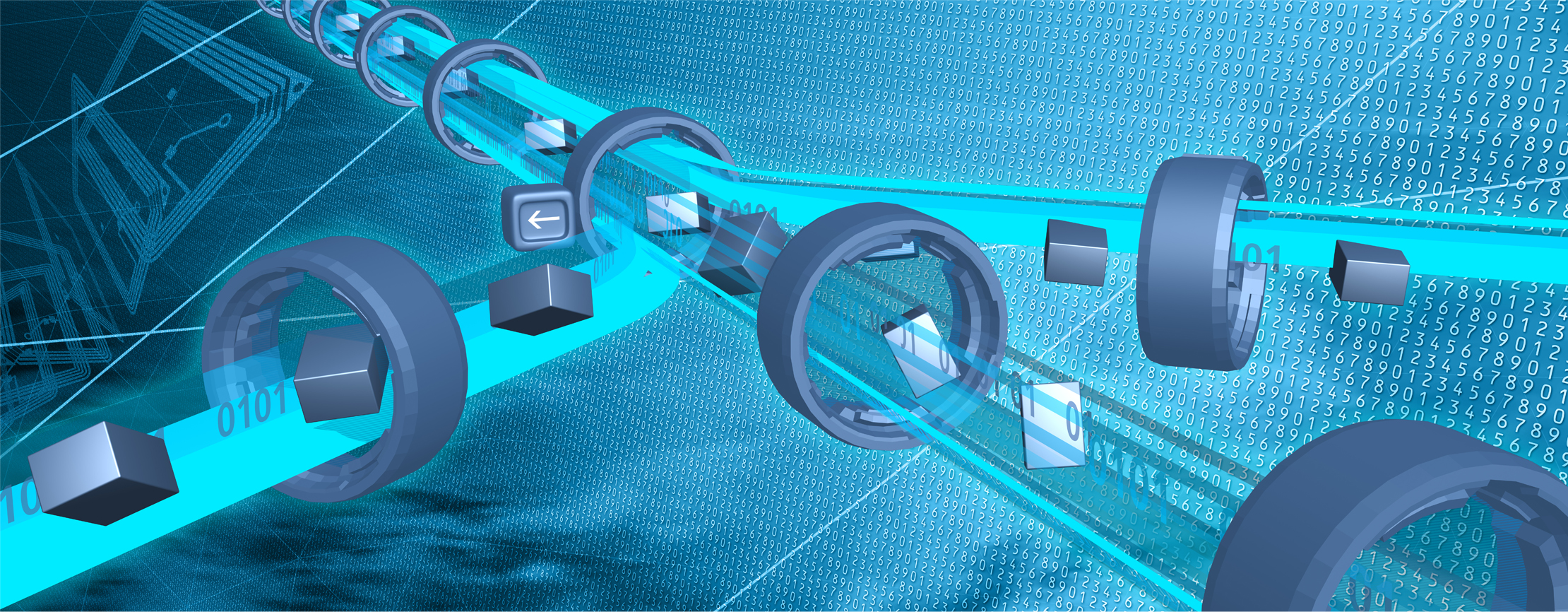Information
Refrigerators that automatically order milk and butter when they are running low, washing machines that do the washing when electricity is cheap, and meat that saves all the data about its production and supply chain: In the Internet of Things objects become intelligent and can exchange information with each other via the internet. The objective of the Internet of Things is to merge the virtual world and the real world. The basis for this is the development of RFID technology which not only gives goods and devices their own identity in the form of a code, but also enables them to collect information about their own status and to trigger actions.
The term originated in the Auto-ID Center at Massachusetts Institute of Technology (MIT) that developed a inter-company RFID infrastructure for the first time in 1999. Kevin Ashton, co-founder and at that time head of the Auto-ID Center was the first person to use the expression “Internet of Things” in a presentation. According to Ashton’s vision, computers should be capable of gathering information independently of humans and be able to understand the real world without being operated by people. This could save us a lot of losses and costs. Humans only have restricted capacity, their time is limited and their work is too inaccurate. Now, more than a decade later, it is all about extending this basic idea to as many objects and everyday things as possible.
Motivation and background
A global network of intelligent devices, items and things that can communicate with each other and their environment – research into the Internet of Things seems to be everywhere nowadays. The “Internet of Things Architecture“ (IoT-A) research project has now successfully completed its first year. This EU flagship project on the one hand plans to set-up an architectural reference model for the Internet of Things. On the other hand, it will also define a range of key components to form a basis for the ever-present Internet of Things.
In the first project year, methods were developed in cooperation with Fraunhofer IML to describe applications within the Internet of Things. The results of the tests carried out in the openID-center impacted on two scenarios in the health-care and retail sectors that were then initially presented to external stakeholders and to the public at large in 2012.
Objectives
Fraunhofer IML and its cooperation partners intend to get away from isolated applications and head towards a shared framework. In particular they are investigating the question of which objects in the Internet of Things are networked and useable. IoT-A made the decision not only to determine electronic devices like RFID transponders as such key components, but also everyday things, human beings and animals. A cow, for example, can become part of the Internet of Things, if you use a system to trace its meat products back along their value added chain.
 Fraunhofer Institute for Material Flow and Logistics
Fraunhofer Institute for Material Flow and Logistics